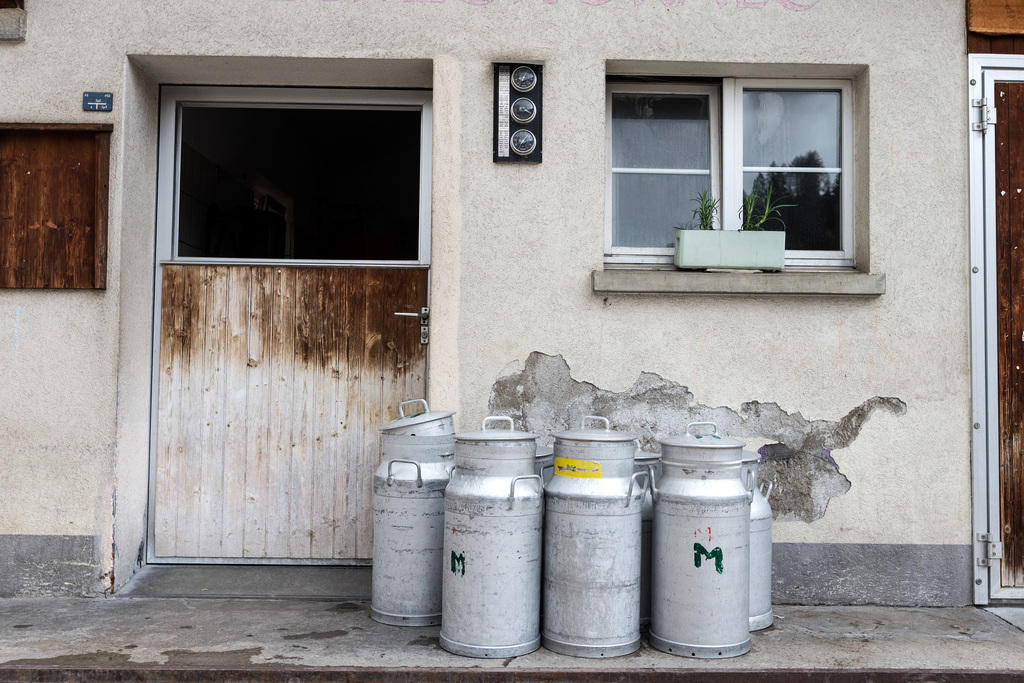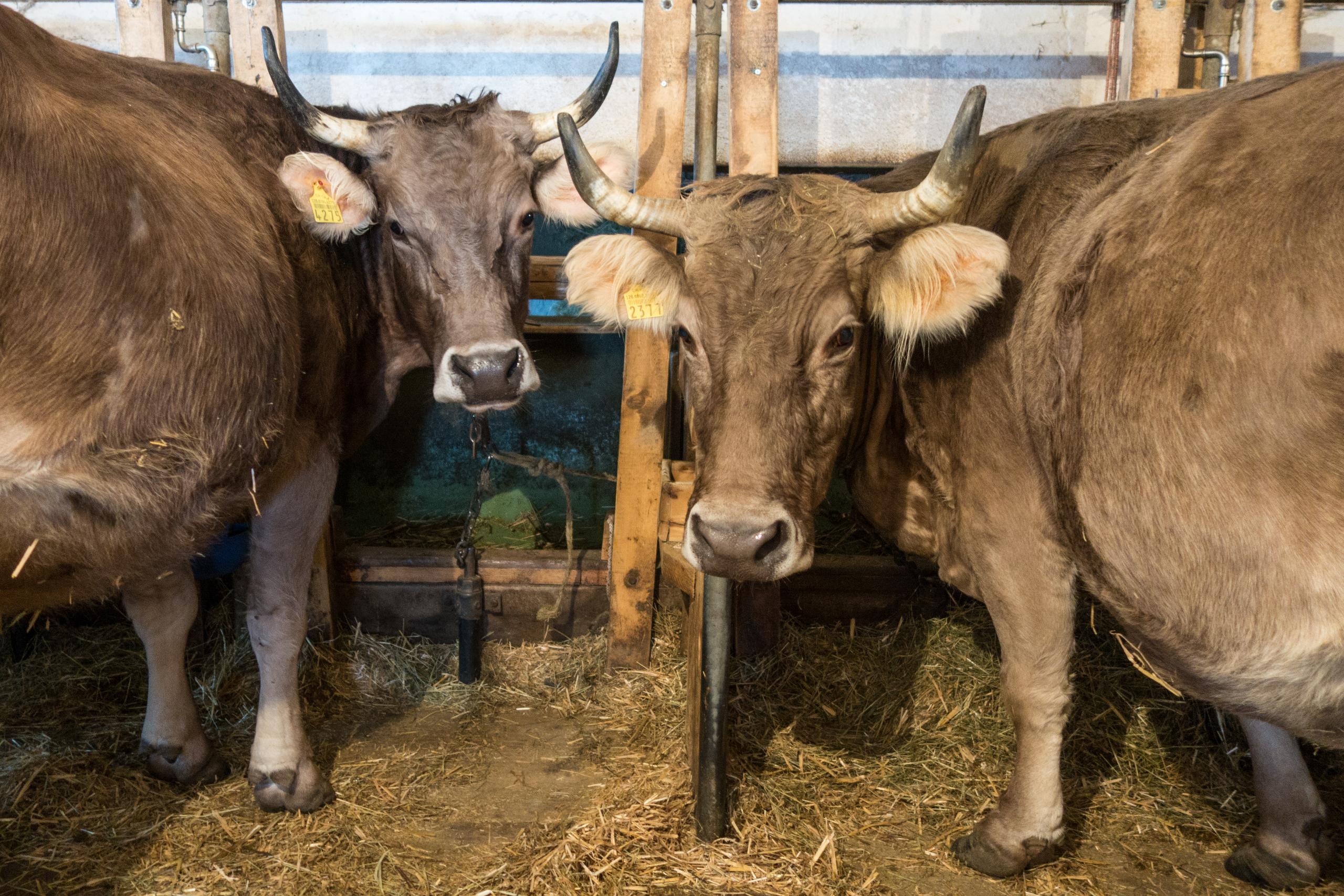Dairy farmers in cut-throat battle

The surplus of milk in European markets, including Switzerland, has led to rock-bottom prices. Two dairy farmers explain how they have managed to survive.
His dairy is one of the biggest and cutting-edge in Switzerland. His cows allow themselves to be milked by a robot whenever they fancy it and their food is distributed automatically. Even the mucking out of the high-tech stalls is performed by a robot.
“We have specialised in dairy farming, invested millions, rationalised and improved efficiency,” said the farmer, who did not want to be named.
In the last few months milk prices have dropped again – this time to under 50 cents per litre. The bare minimum this farmer can sell his milk in order to cover the costs of his business is 55 cents. “Before I open the barn door I have to hand over CHF100,” he said with bitter irony. He can no longer earn anything because he runs his business at a loss.
But he is not thinking of quitting: “I am damned by the production process. Always bigger, always faster, always cheaper. My only hope is that my neighbour will fold first.” As a business owner with several employees he has to live on his reserves and keep investments to a minimum to get his business through this low price period. He lives in hope that that prices will rise soon.
“If Switzerland wants to keep producing milk then it will have to change its political framework to give us a chance of producing milk cheaper,” he declared.
As an example, the high-tech milk producer points to border tariffs on foreign grains: “Swiss grain producers are very happy about this because it means they can enjoy high hourly rates of pay. But it is ruinous for milk producers who have to pay at least twice as much for fodder as German competitors.”
“Best cows in Switzerland”
Toni Peterhans, from Fislisbach, canton Aargau, does not want to complain about milk prices. 2013 breeder of the year in canton Aargau, he says his Holstein cows are among the “best in Switzerland”. While the average Swiss cow will produce 23,000 litres of milk before it goes to slaughter, his produce 58,000 litres. They will be double the age, which has a positive effect on his cost-to-income situation.
His success is not down to luck. Each area of business is organised with “military precision” to the smallest detail, from smart feeding systems to detailed analysis of cow pats. “We are very structured,” said Peterhans. “We wash the cows’ tails every week and give them a steam clean three times a year.”
With milk prices as they are, even the top breeders like Peterhans cannot cover their operating costs. But how much worse are things for less organised farmers?
“There are quite a few that are having sleepless nights and must make savings, stop investing or are slow at paying their bills. Things are very grim on a few farms,” said Peterhans.
But he proudly added: “Things are not bad for me. We have just bought a new tractor for CHF150,000 – without financing,” he said.
In contrast to the advice of some agricultural consultants, Peterhans has refused to put all his eggs into one basket. His 52-hectare farm is not only given over to livestock. He has also found room for other forms of agriculture and a solar plant. He also provides biogas and silage for other farms.
Higher price
Compared to the European Union, the price of Swiss milk is significantly higher. “The price difference with other countries grew 10 cents in 2015 because the price of milk has fallen even faster in the EU,” said Stefan Kohler, managing director of the Swiss Milk Producers Association.
Every year, Switzerland loses 800 to 900 dairy farms. Swiss milk producers have it hard, but not as bad as in large parts of the EU. One reason for this is that the EU milk market has only been partially liberalized. This means that there are still some protected areas that can provide value for producers. For example, consumers pay around three time the price for butter than in other countries so that farmers get a better price for their milk.
In Switzerland, the pace of structural change is moving more slowly. In fact, according to Kohler the progress of structural change is lagging behind progress in production. This means that some dairy farmers have not yet been forced out of the market despite rising costs. “Agricultural policy in recent years has hardly promoted the dairy sector. In the long term this inevitably means that some dairy farms will give up,” said Kohler.
How much does milk cost in your country? Do you find it too expensive, too cheap, or just right? Respond in the comments section below.
Translated from German by Matthew Allen

In compliance with the JTI standards
More: SWI swissinfo.ch certified by the Journalism Trust Initiative













You can find an overview of ongoing debates with our journalists here . Please join us!
If you want to start a conversation about a topic raised in this article or want to report factual errors, email us at english@swissinfo.ch.